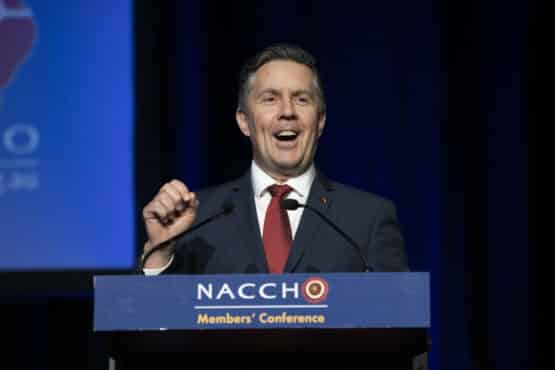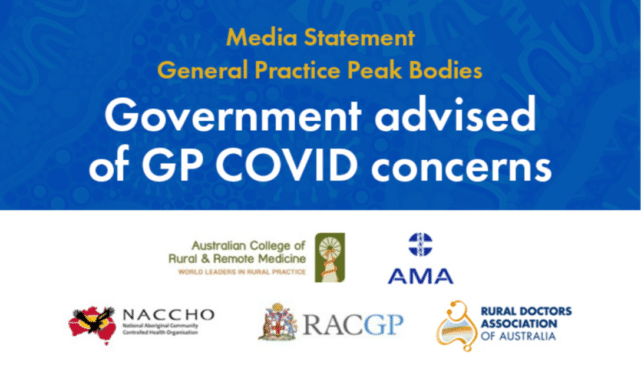

COVID-19 Aboriginal and Torres Strait Islander Advisory Group Communique, 30 June 2020
The Aboriginal and Torres Strait Islander Advisory Group on COVID-19 (the Taskforce) was convened in March 2020, to develop and deliver a National Management Plan to protect communities and save lives; and to advise on health issues related to COVID-19. The Taskforce is co-chaired by the National Aboriginal Community Controlled Health Organisation (NACCHO) and the Australian Government Department of Health. This communique provides an update on the work of the Taskforce and current key areas of focus.
Current status of coronavirus
Australia has done a good job in controlling Coronavirus so far, especially when comparing to other countries, but it is still here and will be for a long time to come. It remains a risk to our health and our communities, especially our Elders and people with existing health problems. Coronavirus can spread quickly especially when people are in large groups, or living close to each other or in close settings. The virus can be spread by people who have symptoms, but also by people who do not have any symptoms or do not seem sick. In the last two weeks Victoria has had big increases in the number of people who have the virus. It’s important to remember that this can happen to any community whether in the city, or out bush.
Our health services are prepared but it will be difficult in many ways if cases are found in communities. We all need to keep up the effort to stop coronavirus from spreading.
To date, 60 cases of coronavirus have been diagnosed in Aboriginal and/or Torres Strait Islander people. None of these have been in a remote community. We need to keep it this way. All people and communities around Australia, including Aboriginal and Torres Strait Islander peoples, have to keep playing our part in keeping Coronavirus out of communities. Do this by keeping at least 1.5 metres away from people, coughing into your elbow, washing hands often, keeping safe when visiting others, and talking to your clinic or health service if you have any sickness or symptoms.
Common symptoms of coronavirus are coughing, a sore throat, fever and shortness of breath. Please get tested if you have any of these symptoms as soon as possible, even if they are not strong.
Commonwealth travel restrictions to remote areas lifting
On 20 March 2020, the National Cabinet recommended the Minister for Health make a Determination under the Biosecurity Act 2015 to restrict travel into remote communities to limit the risk of coronavirus transmission. On 26 March 2020, the Minister for Health signed the Biosecurity (Human Biosecurity Emergency) (Human Coronavirus with Pandemic Potential) (Emergency Requirements for Remote Communities) Determination 2020 (the Determination).
As restrictions have begun to ease, a focus of the Taskforce has been to ensure this is done safely. There are unique and distinct needs for remote communities and these are addressed in the Remote Framework that has been developed by the Taskforce. The Framework outlines specific conditions to inform recommendations to lift restrictions under the Determination. This Framework is consistent with the Pandemic Health Intelligence Plan and forward planning work undertaken to inform the broader response. The Framework was endorsed through AHPPC prior to the announcement by the Prime Minister on 15 May 2020. This provides for a consistent approach when assessing the adjustment of the Determination.
Six amendments have been made to the Determination, with these remote travel restrictions now lifted for all of Western Australia, Queensland, the Northern Territory and, some areas in South Australia. It is important to note that local restrictions may still limit movement into certain remote areas.
Any non-residents wanting to travel to a remote community should follow all the requirements of land councils and local communities, including checking if a land council permit is required and self-isolating if this is required by the jurisdiction or based on personal risk such as recent risk of exposure. If possible travel to remote communities should be avoided at this time, for the safety of residents.
When travelling it is important to practise good hand hygiene and physical distancing. If you are unwell, do not travel to remote communities.
Rapid Point of Care Testing update
$5.8 million has been invested by the Australian Government to establish a rapid COVID-19 Point of Care Testing (PoCT) Program for remote and rural Aboriginal and Torres Strait Islander communities. 85 testing sites are being established in Aboriginal and Torres Strait Islander communities across Western Australia, Northern Territory, South Australia, New South Wales, Queensland and Victoria to ensure access to timely testing capability in remote and difficult to access communities. Testing machines, equipment and training are being supplied to support this Program.
The goal of the Program is for primary care services to be no more than two to three hours’ drive from a testing location, whether PoCT or a conventional laboratory testing site. As at 26 June 2020, 31 sites had commenced testing for COVID-19 across:
- NT (Alpurrurulam, Alyangula, Congress, Galiwin’ku, Gunbalanya, Kalkarindji, Kintore, Numbulwar, Sunrise, Wadeye and Yuendumu,)
- WA (Balgo, Bidyadanga, Blackstone Derby, Jigalong, Kalgoorlie, Kiwirrkurra Kununurra, Warburton, Wiluna and Yura Yungi)
- SA (Ceduna Hospital, Coober Pedy, Ernabella, Indulkana, Oak Valley, Pipalyatjara and Yalata)
- NSW (Broken Hill and Moree)
In consultation with the Taskforce, the Government has developed Clinical guidance for the rational use of PoCT in primary care. The Guidance will be included as an appendix to the Interim National Guidance for remote Aboriginal and Torres Strait Islander communities for COVID-19.
ANU online training modules
The Department of Health engaged the Australian National University, with input from NACCHO, to develop COVID-19 epidemiology training for remote area Aboriginal and Torres Strait Islander Health Practitioners. The Taskforce provided advice on each of the five online training modules which cover key COVID-19 related areas. These include contact tracing in remote communities, personal protective equipment (PPE), interviews and data management.
To date, for Module 1 (Introduction to COVID epidemiology) there have been over 26,000 completions and for Module 2 (contact tracing) there have been over 22,000 completions.
Two new modules are now available. These are:
Conducting interviews with our mob
Using personal protective equipment (PPE) in remote communities
The final module should be available next week. Aboriginal and Torres Strait Islander Health Practitioners are also able to claim the training as continuous professional development (CPD) hours to meet their ongoing registration requirements.
The online COVID-19 training modules are available at: https://covid-19training.gov.au/
Organisations are encouraged to link their website to these online training modules.
Medical evacuation guidelines
Work is progressing to ensure there is the capacity to evacuate patients and contacts from remote and rural locations even when symptoms are mild, rather than waiting to be really sick before evacuating to larger towns / health care facilities. The ability to evacuate cases quickly is a key element of reducing the potential spread and impact of COVID-19 in remote communities.
The Government has allocated $52.8 million for the early retrieval and evacuation of confirmed or potential COVID-19 cases in remote communities. This includes $14 million which has been allocated to the State and Territory Remote Community Medical Retrieval Scale-up Grants, to support flights for medical evacuation and retrieval services in response to COVID-19.
On 4 June 2020, the Taskforce endorsed a guiding framework for transport organisations, health services and public health units on early medical retrievals. The guidelines are available on the Department of Health website under resources.
Remote health services, public health units, and aeromedical retrieval tasking agencies and providers have well established guidance and protocols for medical evacuations that are clinically indicated. Guidance provided in CDNA’s Interim National Guidance for remote Aboriginal and Torres Strait Islander communities for COVID-19 highlights the need for early evacuation of cases for public health reasons in some cases (e.g. community and housing infrastructure inadequate for safe quarantine of suspect cases and/or contacts; delays in testing). This new guidance, for aeromedical organisations and remote health care services, provides a framework for when this low-acuity evacuation would occur and how it would be coordinated. It also outlines key considerations for the evacuation, including repatriation and ensuring cultural safety for patients and their families.

